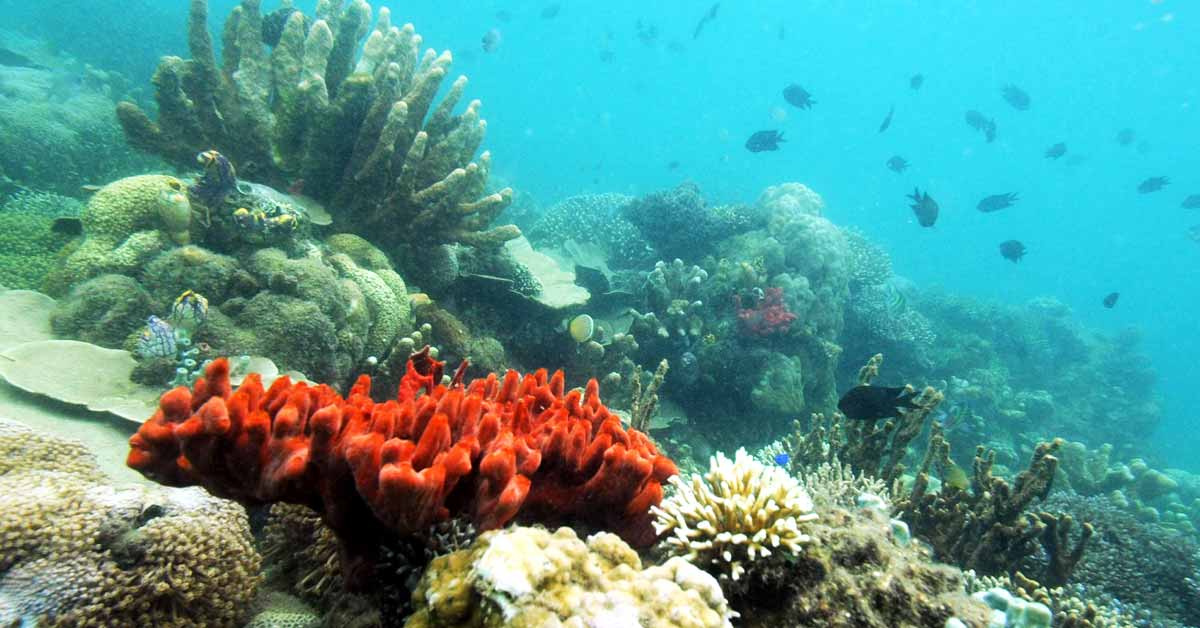The combined effects of COVID-19 and climate change have revealed profound vulnerabilities in Southeast Asia. In the member states of the Association of Southeast Asian Nations (ASEAN), the pandemic turned hospitals into mortuaries at the same time as natural disasters transformed coastal communities into washed-out mud flats.
To improve regional resilience and promote sustainable growth, the post-COVID recovery must focus not only on decarbonisation, but also on the protection of nature. Throughout the region, nature remains in a policy silo, and the importance of biodiversity, in particular, rarely features prominently in economic development plans.
Biodiversity provides food, water, shelter, and medicine. It contributes to social cohesion and climate stabilisation, and can help humanity adapt to a changing environment. And yet the ASEAN Comprehensive Recovery Framework mentions biodiversity only once – in a footnote. Unless this approach changes, ASEAN member states risk sinking billions of development dollars into measures that fail to address a root cause of our current problems.
To lead our region toward recovery, resilience, and long-term sustainable development, ASEAN member states should commit to the 30x30 plan to protect nature. This initiative, which aims to conserve 30 percent of Earth’s lands and oceans by 2030, is a key element of the proposed global biodiversity framework, due to be finalised by 196 countries later this year, and is being championed by the High Ambition Coalition (HAC) of Nature and People. More than 70 countries have signed on to the HAC, but Cambodia is the only ASEAN member state among them.
Southeast Asia comprises just three percent of Earth’s land mass, but it contains almost 20 percent of the world’s biodiversity. More than 2,000 species have been discovered in the ASEAN region over the past 20 years, and three member states – Indonesia, Malaysia, and the Philippines – are considered “mega-diverse” countries, with a variety of species akin to that of the Amazon rainforest and the Congo Basin.
The region contains around 60 percent of the world’s tropical peatlands and has the world’s most extensive and diverse coral reefs, accounting for 28 percent of the global total. The Coral Triangle is a global hub of marine biodiversity.
Although ASEAN countries have taken steps to protect this natural patrimony, including creating the ASEAN Heritage Parks and marine protected areas, risks are mounting. In 2017, the ASEAN Centre for Biodiversity reported that the region is poised to lose 70-90 percent of habitats and 13-42 percent of species by 2100.
Some of this loss can be attributed to climate change, but the infrastructure to support population growth also poses a serious threat. The population of the ASEAN region increased 72 percent between 1980 and 2017. Clearing areas for agriculture and housing development has caused habitat fragmentation, and logging and mining operations continue to encroach on wilderness areas at a rapid rate.
As ASEAN’s Biodiversity Outlook 2 noted: “The productivity and viability of the region’s lakes, rivers, and peatlands continue to decline.” And while “coastal and marine areas are…primary food sources for millions of residents in the region…studies show that most of the region’s seas are overfished and degraded, threatening marine health and food security.”
Perhaps we do not fully appreciate the value of this biodiversity to our own development. And perhaps we also do not appreciate the role we can play in preserving it.
By embracing the 30x30 goal, ASEAN countries could drive new sources of sustainable finance into conservation measures that connect ecological corridors along watersheds and integrated seascapes. These corridors could be established across borders to protect vital concentrations of species in carbon-rich forests and peatlands, coral reefs, and deep-sea beds.
We could empower indigenous peoples and local communities as guardians of still-intact but dwindling natural areas. This would counter the regional trend toward widening inequality and honour these true stewards of nature with the respect – and the rights – they deserve.
In my home country of the Philippines, it took six years to secure protected status for one tract of critical habitat on Palawan Island known as Cleopatra’s Needle. To make our case, we documented every centimetre of land and every species from soil to sky. And we worked closely with the Batak people, who have lived sustainably on that land for centuries. This example can serve as a model for what is possible. But the process must be faster to protect 30 percent of the Earth’s critical habitat and thereby ensure the continuity of life on the other 70 percent.
Another case from the Philippines demonstrates how conserving nature can provide benefits when disaster strikes. The Pilar Municipal Marine Park was established in 2005, and after four years of vigilant management, the area’s decimated fish populations had rebounded. They spilled over into adjacent waters, where local residents use traditional fishing methods. The marine park helped stave off hunger when Typhoon Haiyan struck in 2013 and cut the community off from food aid. And the fish were still thriving when COVID-19 hit and lockdowns disrupted food supply chains.
The pandemic has revealed the deep connections between nature, disaster, and development, and protecting biodiversity must be part of the post-pandemic economic recovery.
Given the high stakes for the ASEAN region, we have a key role to play in this process, leading the drive for 30x30 as part of the High Ambition Coalition. – Project Syndicate

